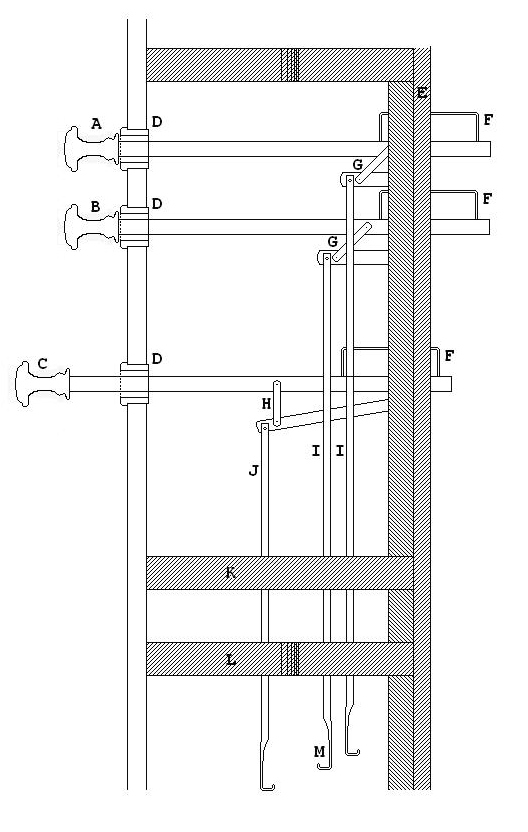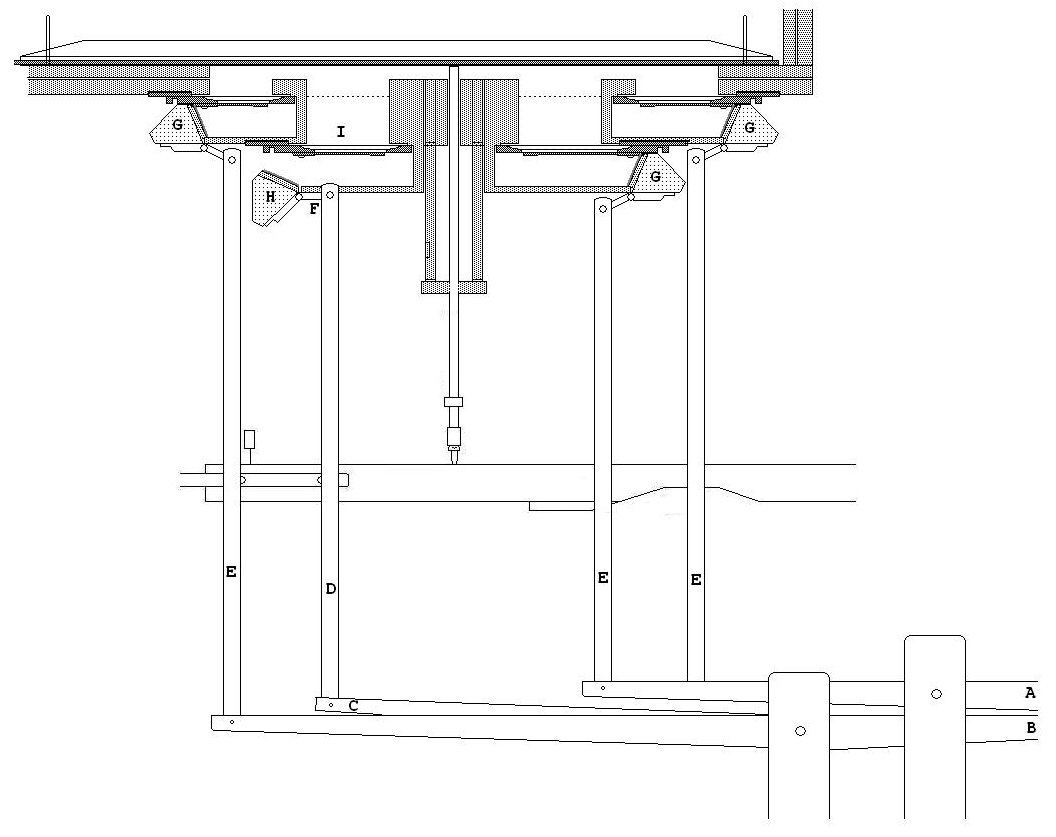
|
Because the Apollo is a reed organ, there are certain properties which the stop mechanism must display.
The ranks of reeds are "turned on" not by the motion of a slider as in a pipe organ, but instead by the opening of
leather-covered valves or "mutes". These mutes cover the outside of the reed cells to prevent air from being sucked through
the reeds into the chest. When the stop is draw, the mute is hinged open by a simple mechanical linkage, it is closed by the
pressure of a spring. It is therefore neccesary that the stop action be constructed so that as the stop is drawn, the mute is opened against the
force of the spring, and when the stop is fully extended, that there is no possibility of the mute spring forcing the stop register back
into the "off" position. This is accomplished as follows:
The stops A and B are shown in the off position. The shanks D D D run through bushed holes in the back board E. The Wires F F F
prevent the stops from being drawn too far. The arms G G are connected to levers M M which act on the rods, I I.
The Stop C is shown in the on position. The shank D is extended, pullinf the arm, H forward and forcing the lever N downwards. The lever
acts on the rod, J which runs through the guide blocks, K and L. The ends of the rods, at M are hooked and push down on levers which
are directly connected to the mute valves. The mute springs excert an upward force on the rods J I I, when the stop is drawn, this force will not
|

